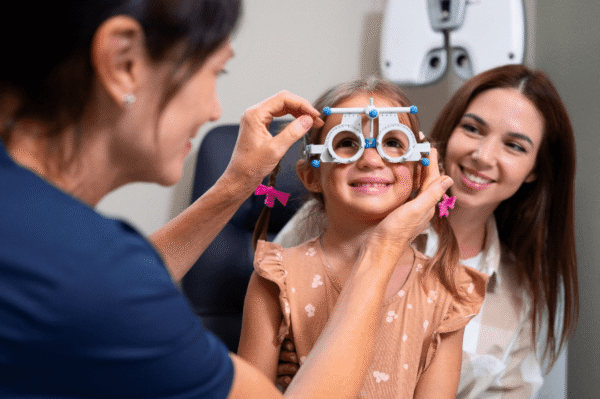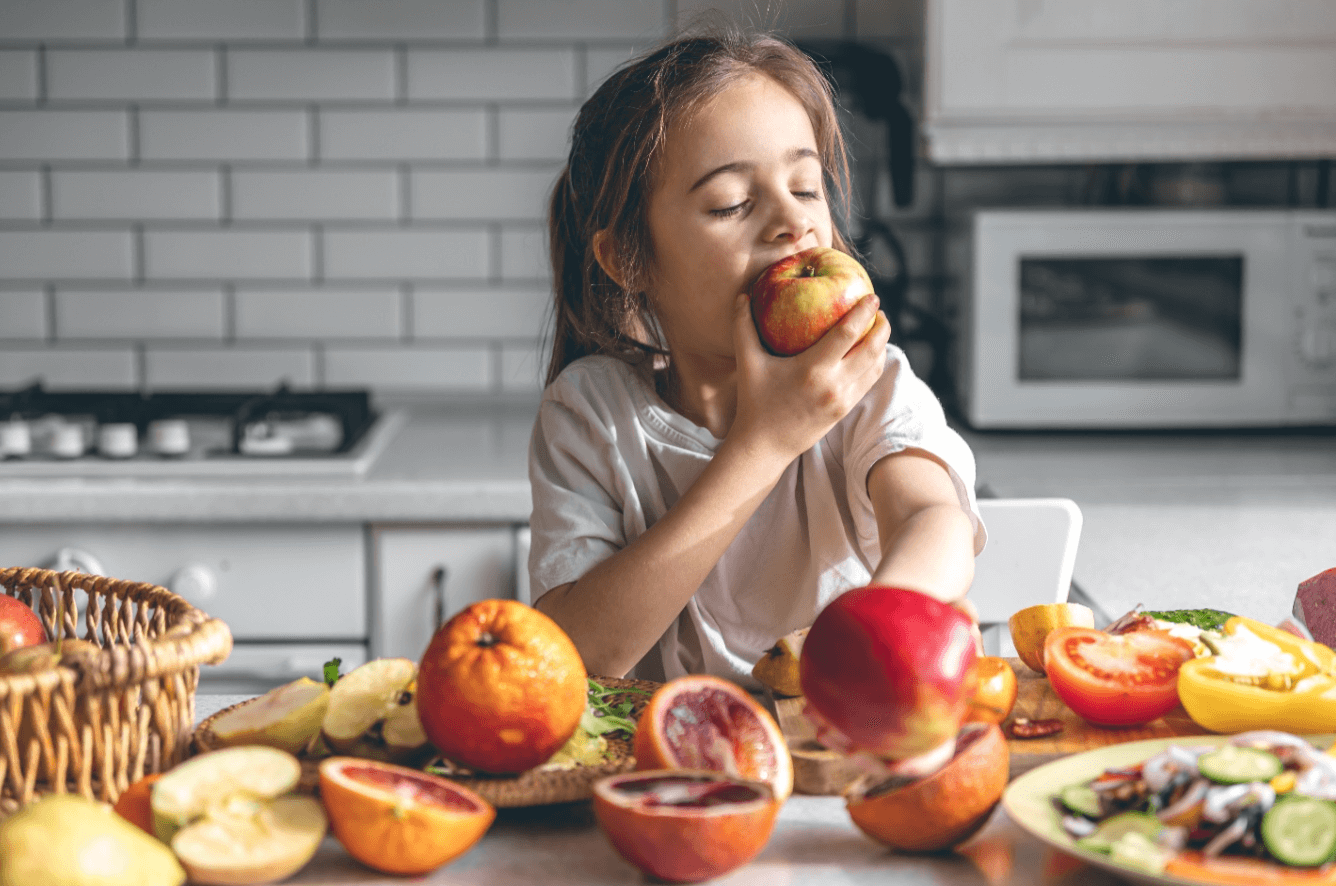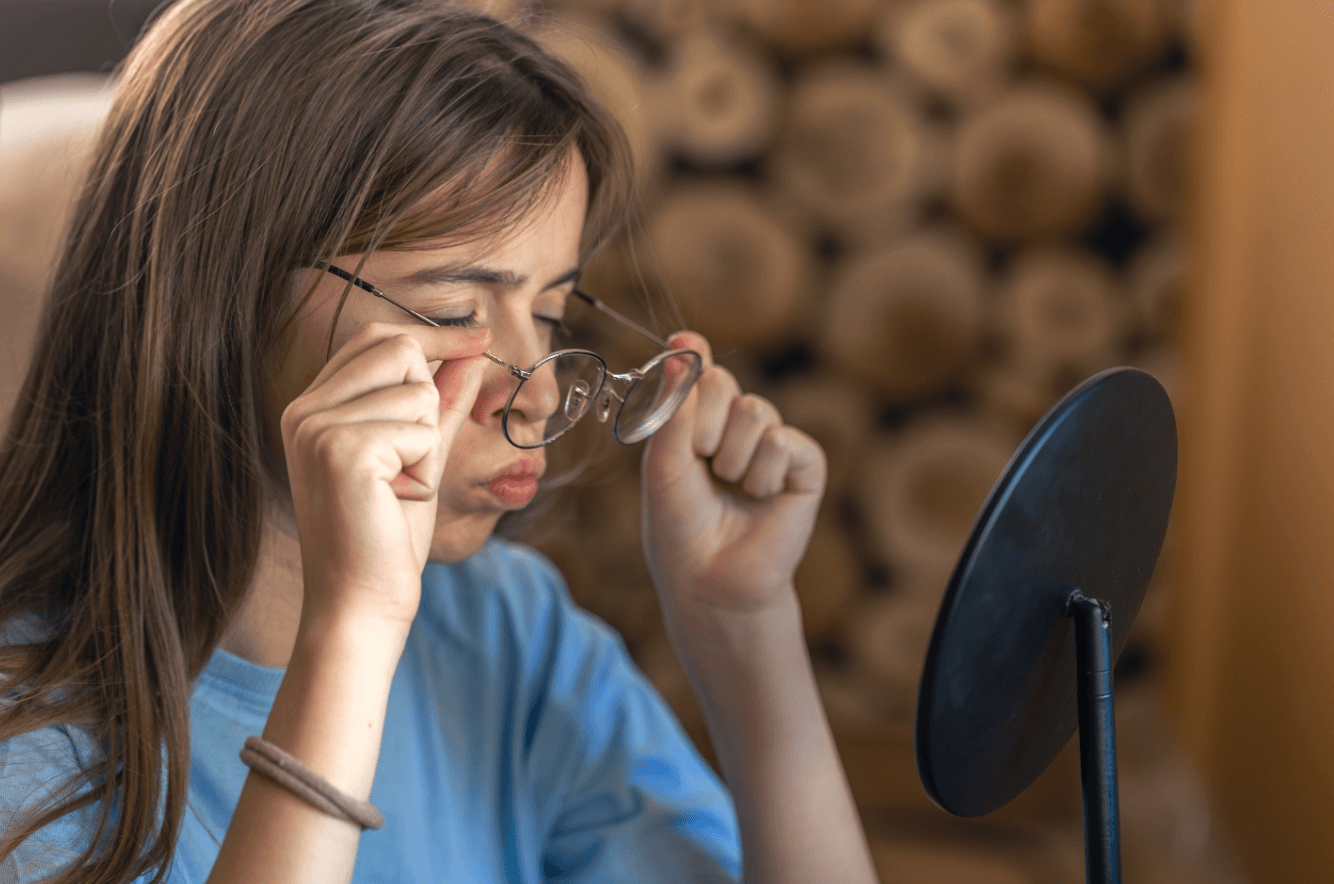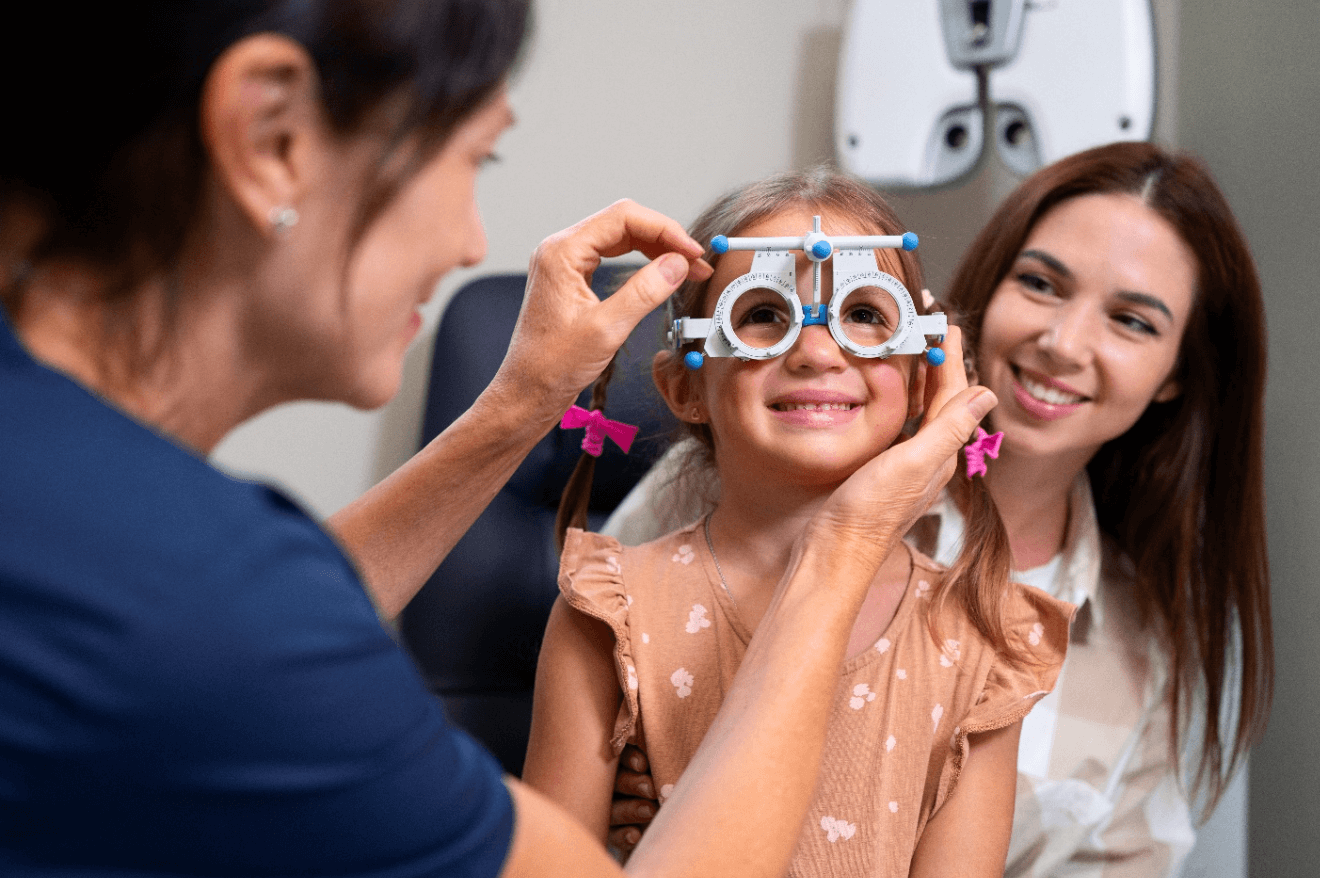As a parent, one of the most important aspects of your child’s overall well-being is their vision health. Clear eyesight plays a key role in learning, development, and daily activities, from reading and writing to playing outdoors. Unfortunately, many eye problems in kids can go unnoticed because children often assume what they see is normal.
The good news? With a few simple habits and regular monitoring, you can help maintain healthy vision in your child and support their eye health as they grow.
9 Practical Tips to Maintain Healthy Eyesight in Kids
Below are some practical, research-backed tips that can help not just maintain but also strengthen your child’s eyesight:
- Schedule Routine Eye Exams

Regular eye exams are the foundation of good eye health, as they help identify potential eyesight problems in kids before these issues interfere with learning or daily life. Many vision problems, like lazy eye (amblyopia) or nearsightedness (myopia), can be corrected when they’re detected early.
Experts recommend scheduling the first comprehensive eye exam at 6 months old, again between ages 2 and 3, and once more before starting school.
- Limit Their Screen Time

Today’s kids spend more time than ever on their digital devices, be it tablets, phones, TVs, or computers. Too much screen time can cause digital eye strain, dry eyes, headaches, and even affect sleep quality.
To tackle this, encourage your child to follow the 20-20-20 rule: every 20 minutes, look 20 feet away for at least 20 seconds.
The American Academy of Paediatrics suggests setting screen time limits for kids. Here’s what should be the acceptable time limit:
- Avoid screen time altogether for children under age 2.
- For children ages 2 to 12, aim to limit screen time to about one hour per day.
Reducing digital exposure is one of the most effective ways to improve kids’ eyesight naturally and prevent long-term strain.
- Ensure Proper Lighting When Reading

Good lighting reduces eye strain during reading or homework. Encourage your child to read or study in well-lit areas. It shouldn’t be too dim or too bright.
Natural light is best, but if that’s not possible, use soft, even lighting that minimizes glare on screens or book pages. Avoid letting kids read in the dark or watch screens in a dark room, as this forces their eyes to work harder and can contribute to discomfort or fatigue.
- Provide a Nutritious Diet

A balanced diet helps prevent deficiencies that may contribute to weak eyesight in kids. Foods packed with vitamin A, vitamin C, omega-3 fatty acids, and lutein are essential for improving vision naturally.
Some of the best foods for healthy vision include:
- Carrots, sweet potatoes, and spinach (rich in beta-carotene)
- Salmon and tuna (high in omega-3s)
- Oranges, berries, and bell peppers (loaded with vitamin C)
- Eggs and leafy greens (contain lutein and zeaxanthin)
- Encourage More Outdoor Play

Outdoor play is not just crucial for good physical health; it also gives the eyes a much-needed break from screens. In fact, outdoor time can impact the development of vision problems in kids as they grow up.
A 2021 study published in Scientific Reports found that children who spent less time outdoors had a higher likelihood of developing nearsightedness as young adults. The study also suggested that increasing outdoor time during the teen and young adult years may help lower the risk of developing myopia later on.
- Provide Protective Eyewear

If your child participates in sports like baseball, basketball, or soccer, ensure they wear protective eyewear made of polycarbonate lenses. These materials are impact-resistant and safeguard the eyes from potential injuries. Likewise, when outdoors, sunglasses with UV protection may contribute to preventing damage from harmful ultraviolet rays.
- Look for Early Signs of Eyesight Problems in Kids

Children may not always realize or express that something’s wrong with their vision. Parents should stay alert for signs of vision problems, like:
- Squinting or tilting the head to see clearly
- Frequent eye rubbing
- Holding books or devices too close
- Complaints of headaches or double vision
If you notice any of these, it’s best to consult an eye care professional promptly. Identifying eyesight problems in kids early can make a significant difference in treatment outcomes.
- Make Them Practice Good Eye Hygiene

Teaching good ocular hygiene from an early age helps prevent infections like conjunctivitis (pink eye) or eye irritation. Encourage your child to wash their hands regularly, avoid rubbing their eyes, and never share towels or pillowcases. If your child wears contact lenses later, emphasise proper cleaning and storage habits.
These small steps can prevent many avoidable eye issues and promote healthy eyesight maintenance over time.
- Turn Eye Care Positive for Kids

Making eye care fun for kids can help them take ownership of their habits. Use colorful charts, games, or reward systems to remind them to blink more during screen time, eat eye-friendly foods, or wear sunglasses outdoors. Reading age-appropriate books about the eyes or watching educational videos can make learning about maintaining healthy eyesight enjoyable and engaging.
Conclusion
Maintaining your child’s vision health doesn’t have to be complicated. It’s about creating consistent, healthy habits and encouraging balanced routines. By combining regular eye exams, proper nutrition, limited screen time, and regular active outdoor play, you can help naturally improve your child’s eyesight and set them up for a lifetime of healthy vision.
ABOUT THE AUTHOR
Dr. Azhar I. Salahuddin is an ophthalmologist at InSight Vision Center and is fellowship-trained in cornea, external diseases, and refractive surgery. Dr. Salahuddin has been performing cataract surgery for over 19 years and specializes in ocular reconstruction, corneal transplantation surgery, as well as vision correction through a variety of intraocular lenses. Dr. Salahuddin is board-certified by the American Board of Ophthalmology and was trained at Boston University.
RELATED ARTICLES

